The 2005 Buffalo Nickel features several valuable errors that collectors seek. Common errors include the “speared bison” (a die gouge creating a line through the bison), “two-horned bison” (a die chip on the head), and “detached leg” (where the leg appears separate from the body). Other notable errors are double die obverse (DDO) showing doubling on Jefferson’s profile, strike-through errors from grease or debris on the die, and improperly annealed planchets causing unusual discoloration. To identify these errors, examine the reverse for bison abnormalities, check the obverse for doubled letters in “IN GOD WE TRUST” and “LIBERTY,” and look for any unusual coloring. These errors can significantly increase a coin’s value to collectors.
The 2005 Jefferson Nickel marked a special chapter in American coinage history—the Westward Journey Nickel Series celebrating the Lewis and Clark expedition’s bicentennial. Among its two designs that year, the American Bison reverse (often called the Buffalo Nickel) captured collectors’ attention with its stunning portrayal of a bison. What makes this coin particularly interesting isn’t just its commemorative status, but the numerous mint errors that transformed ordinary pocket change into valuable collector pieces worth far more than five cents.
Understanding the 2005 American Bison Nickel
The United States Mint produced this special design featuring a right-facing American bison on the reverse, designed by Jamie Franki. The obverse maintained Joe Fitzgerald’s modified Jefferson portrait introduced earlier in the Westward Journey series. Three facilities struck these coins: Philadelphia (no mint mark or P), Denver (D), and San Francisco (S for proof versions only).
Total mintage reached substantial numbers: Philadelphia produced 448,320,000 pieces, while Denver struck 487,680,000 coins. San Francisco contributed 3,344,679 proof specimens specifically for collectors. Despite these high production numbers, certain error varieties command significant premiums in today’s market.
Breaking Down Mint Mark Values
Philadelphia Mint (No Mint Mark)
Standard circulation strikes from Philadelphia carry modest premiums in typical grades. A coin in Good to Fine condition remains at face value, while Very Fine examples might fetch $0.10 to $0.25. The real value emerges in uncirculated conditions:
| Grade | Value |
|---|---|
| AU-50 | $0.50 – $1.00 |
| MS-60 | $1.50 – $3.00 |
| MS-63 | $3.00 – $5.00 |
| MS-65 | $8.00 – $12.00 |
| MS-67 | $35.00 – $50.00 |
Specimens grading MS-68 or higher can reach $150 to $300, according to recent Heritage Auctions sales data from 2023.
Denver Mint (D Mint Mark)
Denver strikes follow similar pricing patterns for circulation grades. The mint mark appears on the obverse, below “IN GOD WE TRUST.” Values for Denver pieces:
| Grade | Value |
|---|---|
| AU-50 | $0.50 – $1.00 |
| MS-60 | $1.50 – $3.00 |
| MS-63 | $3.00 – $6.00 |
| MS-65 | $10.00 – $15.00 |
| MS-67 | $40.00 – $60.00 |
Premium quality MS-68 examples have sold for $200 to $400 at major auctions.
San Francisco Mint (S Mint Mark – Proof Only)
San Francisco produced exclusively proof coins for collector sets. Standard 2005-S proofs in PR-65 grade typically value at $3.00 to $5.00. Deep Cameo (DCAM) specimens command higher prices:
- PR-65 DCAM: $8.00 – $12.00
- PR-67 DCAM: $15.00 – $25.00
- PR-69 DCAM: $30.00 – $50.00
Perfect PR-70 DCAM coins occasionally appear at auction, achieving $150 to $250 depending on market conditions.
Complete Error Varieties Worth Hunting
Speared Bison Error
The most famous and valuable error variety shows a raised die gouge creating a distinctive line that appears to pierce through the bison’s body. This dramatic error resulted from damage to the reverse die during production. The “spear” typically runs diagonally across the animal’s midsection.
Market values for authenticated Speared Bison errors range significantly based on the severity and position of the die gouge:
- Light spear (barely visible): $25 – $75 in MS-63
- Moderate spear (clearly defined): $100 – $200 in MS-63
- Heavy spear (dramatic gouge): $250 – $500 in MS-65
A particularly striking example graded MS-66 sold for $875 at a 2023 Stack’s Bowers auction, while an MS-67 specimen reached $1,340 through Heritage Auctions in late 2022.
Two-Horned Bison Error
A die chip on the bison’s head creates what appears to be a second horn or spike protruding from the animal’s skull. This error occurs when a small piece breaks off from the die, leaving a raised area on struck coins. The “second horn” typically appears above or near the bison’s actual horn.
Values for this distinctive variety:
- MS-60 to MS-63: $40 – $90
- MS-64: $120 – $180
- MS-65: $200 – $300
- MS-66 and higher: $350 – $600
Position and prominence affect value considerably. Specimens where the chip creates a clearly visible second horn fetch premium prices.
Detached Leg Error
This die break error makes the bison’s rear leg appear separated from its body, as if floating independently. The error progresses as the damaged die continues striking coins, with later strikes showing more pronounced separation.
Early die state examples (slight separation) value at $30 to $75 in MS-63, while advanced die states showing complete detachment command $100 to $250 in the same grade. An exceptional MS-66 example sold for $485 at a 2023 Great Collections auction.
Double Die Obverse Varieties
Several double die obverse varieties exist for 2005 American Bison nickels, though none are as dramatic as famous doubled dies from other series. The doubling typically appears in “LIBERTY,” “IN GOD WE TRUST,” or the date.
Identified DDO varieties include:
2005-P DDO FS-101: Doubling visible in “LIBERTY” and date. Values range from $15 to $50 in circulated grades, $75 to $150 in MS-63, and $200 to $350 in MS-65.
2005-D DDO FS-801: Minor doubling in “IN GOD WE TRUST.” Less dramatic than other varieties, these typically sell for $10 to $30 in MS-63.
Authentication matters significantly for doubled die varieties. The Professional Coin Grading Service (PCGS) and Numismatic Guaranty Company (NGC) maintain variety designations that confirm legitimacy and enhance marketability.
Strike-Through Errors
Strike-through errors occur when grease, debris, or other foreign material on the die prevents metal from flowing properly into design elements. Common manifestations include:
Grease-filled dies: Portions of the design appear weak, flattened, or completely missing. The bison’s details or lettering may show incomplete strikes. Values range from $10 to $50 depending on affected areas and overall grade.
Struck-through debris: Foreign objects between die and planchet create irregular patterns. A 2005-D struck through cloth fiber sold for $125 in MS-64, while a piece struck through wire fragments reached $185 in MS-63.
Filled die errors: When dies accumulate grease in specific recesses, repeated strikes create coins missing portions of design. Significant fill affecting major design elements can value at $30 to $100 in uncirculated grades.
Improperly Annealed Planchet
During production, planchets undergo annealing—a heat treatment that softens metal for striking. Improper temperature or timing creates coins with unusual coloration ranging from golden-brown to dark charcoal.
These visually striking errors attract collector attention despite being production flaws rather than die errors. Market values vary considerably:
- Minor discoloration: $5 – $15 in MS-60+
- Moderate “cooked” appearance: $20 – $50 in MS-63
- Dramatic color anomalies: $60 – $150 in MS-64+
A spectacularly discolored 2005-P specimen with deep bronze patina achieved $275 at a 2023 Heritage Auctions sale, graded MS-65.
Additional Error Types Worth Noting
Off-center strikes: Misaligned strikes showing partial design command premiums based on percentage off-center and whether the date remains visible. A 10% off-center with full date might bring $25 to $75, while 30% off-center examples reach $100 to $200. Dramatic 50%+ off-center pieces with visible dates have sold for $300 to $600.
Broadstrike errors: Coins struck without the retaining collar expand beyond normal diameter. A 2005-D broadstrike measuring 23mm (versus normal 21.21mm) sold for $95 in AU-55.
Clipped planchets: When planchet punches overlap on metal strips, curved or straight clips result. Significant clips affecting 10-15% of the coin value at $15 to $40, while dramatic 25%+ clips reach $60 to $120.
How to Identify Valuable Errors
Examining coins requires adequate lighting and magnification. A 5x to 10x magnifying loupe reveals details invisible to the naked eye. For serious error hunting, invest in a 10x to 20x jeweler’s loupe or USB microscope.
Examine the reverse carefully: Hold the coin at various angles under bright light. The Speared Bison error typically shows as a raised line catching light differently than surrounding surfaces. Two-Horned Bison chips appear as small protrusions near the horn area. Detached Leg errors require close inspection of the rear leg’s connection to the body.
Inspect the obverse systematically: Start with “LIBERTY” checking each letter for doubling or spreading. Move to “IN GOD WE TRUST” examining letter bases and edges. Check the date for doubled digits. Rotate the coin to catch light on letters at different angles, making doubling more apparent.
Check for discoloration patterns: Improperly annealed planchets show color variations distinct from normal toning. Look for bronze, brown, or blackened areas that appear even rather than spotted. Compare to known normal examples to distinguish environmental damage from production anomalies.
Verify strike quality: Weak strikes affecting overall design differ from strike-through errors affecting specific areas. Grease-filled dies create weak areas with soft, mushy details rather than sharp, incomplete strikes.
Document your findings: Photograph suspected errors from multiple angles. Join online coin communities like CoinTalk or the PCGS forums where experienced collectors can provide opinions before investing in professional authentication.
Where Error Coins Command Top Dollar
Professional authentication through PCGS or NGC significantly impacts marketability and realized prices. While attribution costs $20 to $50 depending on service level, certified errors typically sell for substantially more than raw examples.
Major auction houses including Heritage Auctions, Stack’s Bowers, and Great Collections regularly feature 2005 Buffalo Nickel errors. Their realized prices databases provide current market values for specific error types and grades.
Online marketplaces like eBay show active trading in these errors, though prices vary widely. Certified examples consistently achieve stronger results than raw coins. Recent eBay sales show certified Speared Bison errors in MS-64 selling for $175 to $285, while raw examples claiming the same error bring $50 to $125.
Coin shows provide opportunities to sell directly to dealers or other collectors. Dealers typically offer wholesale prices (50-70% of retail), while collector-to-collector transactions might achieve closer to full market value.
Building a Strategic Collection
Rather than pursuing every minor variety, focus on quality examples of major errors. A single certified MS-65 Speared Bison represents better investment than multiple low-grade examples of common varieties.
Search strategies for finding errors in circulation have changed since 2005. Most coins showing significant wear reveal errors less dramatically than uncirculated pieces. However, bank rolls occasionally still yield uncirculated or near-uncirculated specimens. Request customer-wrapped rolls rather than machine-wrapped for better odds of finding older stock.
Estate sales, coin shop junk boxes, and online bulk purchases sometimes harbor unrecognized errors. A collector recently discovered a Detached Leg error in a $50 box lot purchased at an estate auction, later certified at MS-64 and valued at $280.
Documentation matters for long-term value preservation. Maintain purchase records, photographs, and certification numbers. Track market trends through auction archives to understand which varieties appreciate most consistently.
Maximizing Your 2005 Buffalo Nickel Returns
The 2005 American Bison Nickel offers collectors accessible entry into error variety collecting without five-figure price tags. Start by learning to identify major errors through study of certified examples at coin shows or online auction archives. Practice on circulated coins before purchasing higher-grade specimens.
Focus acquisition efforts on certified examples of the Speared Bison, Two-Horned Bison, and significant Detached Leg varieties in MS-63 or better grades. These consistently show strongest market performance with appreciating values over the past five years. Join specialized collecting groups focused on Jefferson Nickels or modern errors to access market knowledge and trading opportunities. Time invested in education pays dividends when opportunities to acquire quality pieces at favorable prices emerge.
You may be interested:
- 1859 Indian Head Penny Coin Value Complete Errors List And No Mint Mark Worth Guide For Collectors
- 1911 V Nickel Coin Value Guide Complete Errors List And No Mint Mark Worth Today
- 1902 Dime Coin Value Complete Errors List With O S And No Mint Mark Worth Guide
- 1788 Quarter Coin Value Complete Guide Errors List And D S P Mint Mark Worth Revealed
- 1776 To 1976 Bicentennial Half Dollar Coin Value Complete Errors List And What Your D S And No Mint Mark Coins Are Actually Worth
- 1990 Penny Coin Value Errors List How D S And No Mint Mark Pennies Are Worth Thousands Of Dollars

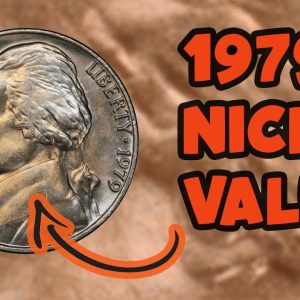
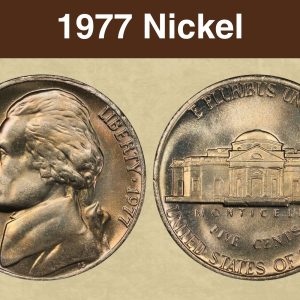
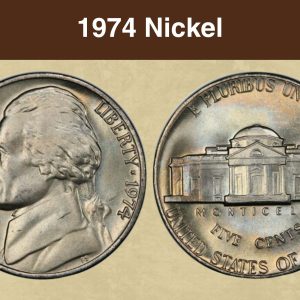
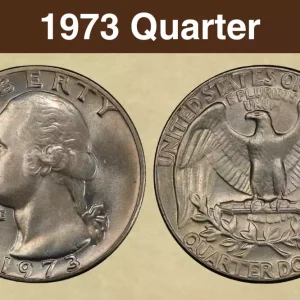
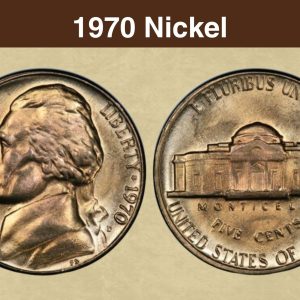
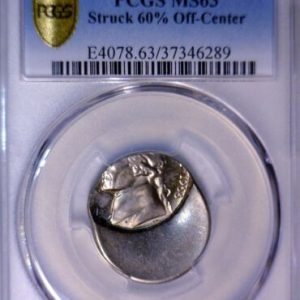
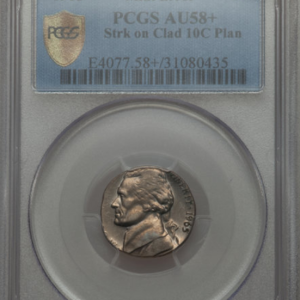
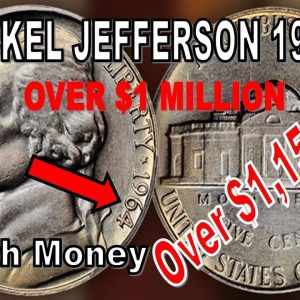
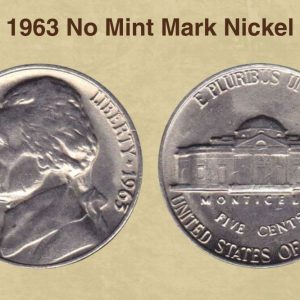
What is the error on the 2005 bison nickel?
Common 2005 Bison nickel errors include the “speared bison” (a die gouge creating a line through the bison), “two-horned bison” (a die chip on the head), and “detached leg” (where the leg appears separate from the body). Other errors found include double die obverse (DDO) and strike-through errors, where grease fills parts of the die. These errors can increase a coin’s value to collectors.
How much is a 2005 D mint nickel worth?
A standard 2005-D “Buffalo” nickel is worth about face value ( $ 0.05 $ 0.05 $ 0. 0 5 ) to a few dollars, unless it is in perfect, uncirculated condition. More valuable examples are those with significant minting errors, such as the “Speared Bison” variety, which can be worth several hundred to over a thousand dollars in high grades.
What to look for in a 2005 Buffalo Nickel?
On a 2005 nickel (not a true “Buffalo nickel”), look for a “spear bison” die clash or gouge on the reverse, where a line pierces the bison’s body, and a “two-horned bison” die chip on the bison’s head. Also, search for obverse die cracks, especially on 2005-P coins, or any doubling on the obverse.
Is a 2005 Lewis and Clark nickel worth anything?
A 2005 Lewis and Clark nickel has a face value of 5 cents and is worth that much if it’s been in circulation, but uncirculated versions or those with specific errors, like double dies or struck-through errors, can be worth more. The value can range from a few cents for a common circulated coin to potentially over $100 for a rare variety in high grade.